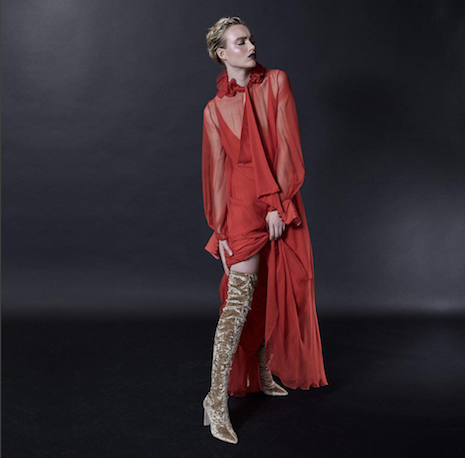 French shoppers have embraced multichannel. Image credit: Matches Fashion
French shoppers have embraced multichannel. Image credit: Matches Fashion
VENICE, Italy – Of the many disruptions to the overall luxury business, none are more directly important than the changing ways that luxury consumers shop.
At the Financial Times Business of Luxury Summit on May 22, a panel of executives from luxury retailers discussed the consumer behavior of today, particularly among millennials. Overwhelmingly, digital and social media factor heavily into modern consumers' purchasing habits.
"Most of our customers who shop have interacted with a story or piece of content before they purchased," said Ulric Jerome, CEO of Matchesfashion.com. "They read an interview or something and then bought something related to it.
"When someone interacts with a story, they stay on average 13 minutes compared to the ecommerce side where they only stay four," he said. "When you can create that personal story, you can increase your average interaction time a lot."
Avant garde
Luxury is an old business, therefore in many ways can be slower to take up new trends than mass brands.
This is particularly true when it comes to digital tools. Many luxury brands did not even begin selling online until long after their mass counterparts did.
But in today’s luxury business, this is no longer an option. Luxury brands must be fully competent at using social media and ecommerce, especially as they seek to capture engagement from younger consumers.
Older brands and retailers should look to the new generation of luxury startups, many of whom are just as digitally native as the millennials they target.
Brands must balance between tradition and innovation. Image credit: Matches Fashion
"We create content that’s only for social media," said Rachel Reavley, vice president of brand strategy at Threads Styling. "Our Web site does not have any community around it. It's all on social media.
"All transactions we do start with content," she said. "The content that we create is focused on Gen Z and millennials."
But there is a balancing act to strike between innovation and tradition.
Brands needs to understand that using innovative new tools and reinventing business models do not need to equate to throwing years of brand building out the window.
Instead, those digital tools should serve as a supplement to the legacy and tradition that has been built up over the years.
"With digital brands, sometimes they want to be so digital that they forget things," said Alexandra Van Houtte, founder of Tagwalk.
"What we realize is that people like knowing the story of a brand and the values of a brand," she said. "Brands need to concentrate more on their core values. You have to use technology to supplement the brand, not replace it."
China's forecasts
China has increasingly become one of the most important markets in the world for retailers.
According to a new report from Frost & Sullivan, more than 80 percent of retailers in the United States and elsewhere believe that China is a lucrative market to explore. However, many of those retailers feel overwhelmed with the prospect of doing business in China due to the extreme difference in culture and law between Western nations and China (see story).
Chinese consumers are hungry for western luxury brands. Image credit: JD.com
For luxury brands that have had success in China however, they quickly learn that China experiences many of the same trends that the rest of the world does, particularly when it comes to millennials and how they spend their money today.
"The age group between 21 and 35 account for 40 percent of luxury goods sales in China and 20 to 25 accounts for 20 percent," said Xia Ding, president of international fashion, JD.com. "It's skewed really young.
"They are looking for something limited-edition, something made specifically for China," she said. "Don’t talk down to them, talk to them and among them. That’s what resonates with them."


